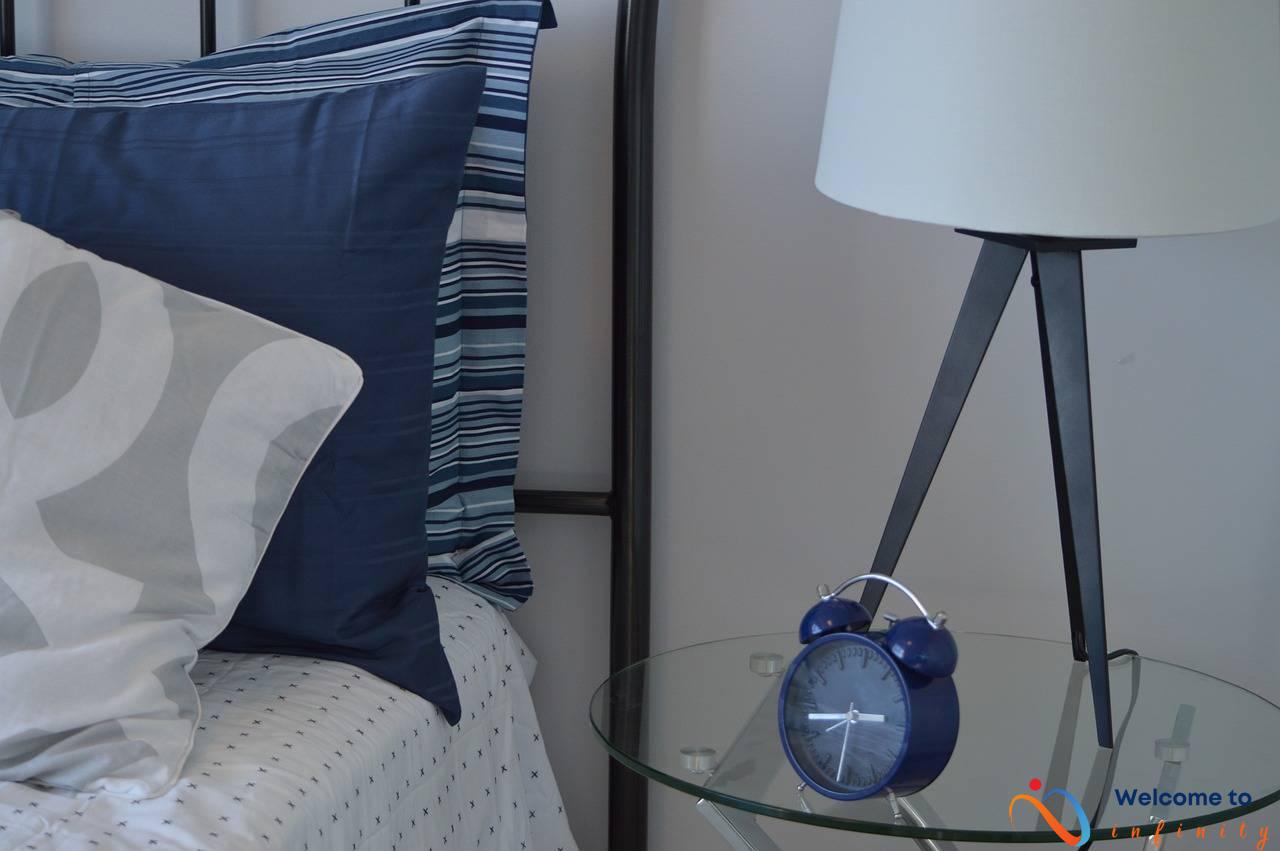Incorporating plants in your home office is more than just a trendy aesthetic choice. There are numerous benefits to adding some greenery to your workspace, from boosting mental and physical health to increasing productivity. In fact, studies have shown that employees who work in offices with natural elements like plants tend to feel more focused, motivated, and satisfied with their jobs.
One major benefit of plants is their ability to reduce stress levels. With the daily pressures of work, it's important to have a calming element in your workspace. Plants can also improve air quality by filtering out harmful toxins and increasing oxygen levels, leading to better overall health. Additionally, having plants in your workspace can increase creativity and inspiration, helping you think outside the box and come up with fresh ideas.
When it comes to choosing plants, keep in mind that low-maintenance varieties like succulents and snake plants are perfect for beginner plant parents. They don't require a lot of attention and can tolerate periods of neglect. For those with a green thumb, more complex plants like bonsais and fiddle leaf figs can be a fun challenge to care for.
Now that you've chosen your plants, it's important to learn how to properly care for them. Each plant has specific needs when it comes to watering, lighting, and fertilizing so be sure to do your research. Don't be afraid to get creative with your plants either! DIY projects like creating a plant wall or terrarium can add a personalized touch to your workspace.
When designing a plant-friendly workspace, consider incorporating natural materials like wood and stone to complement your greenery. Also, be mindful of the location and flow of natural light throughout the day. A well-lit space can make all the difference for your plants and your mood.
All in all, incorporating plants into your home office is a no-brainer. Not only do they look great, but they can improve your mental and physical health while also boosting productivity. So why not add some greenery to your workspace today and see what a difference it can make?
Benefits of Plants in Your Home Office
Working from home can be both stressful and isolating, but adding plants to your home office can help improve your mental and physical health, as well as increase productivity. Studies have shown that incorporating plants in your workspace can have numerous benefits for your overall well-being.
Firstly, plants are known to reduce stress levels, which is especially important for those who work from home and might experience a certain level of anxiety and pressure. The presence of plants has been shown to lower cortisol levels, which is the hormone associated with stress. In addition, plants also help to improve air quality, by increasing oxygen levels and removing pollutants from the air.
Moreover, having plants in your home office can also boost creativity levels. It's no secret that being outside in nature can have a positive impact on our minds and bodies. By bringing the outdoors inside, we can experience the same positive effects, such as reduced mental fatigue, and increased focus and attention span. Having a green and vibrant workspace can also help to stimulate our creativity and imagination, which is essential for those who work in creative fields.
Incorporating plants in your home office is an easy and affordable way to improve your overall well-being and productivity. Whether you opt for low maintenance plants like succulents or more complex ones like fiddle leaf figs, there is no denying the benefits of having plants in your workspace.
- Reduces stress levels
- Improves air quality
- Boosts creativity
By reducing stress, improving air quality, and boosting creativity levels, adding plants to your home office is a simple but effective way to enhance your overall quality of life.
Types of Plants to Incorporate
Adding plants to your home office is a great way to brighten up the space and improve your well-being. When choosing plants to add to your workspace, it is important to consider the level of maintenance required. Low maintenance plants like succulents and snake plants are perfect for beginners who may not have a lot of experience caring for plants.
Succulents are a great option for those who want to add some greenery to their workspace but have limited time for maintenance. These plants are easy to care for and require minimal watering. Snake plants are another great option for those who are new to caring for plants or have limited space for a larger plant. They are hardy and can grow in low-light conditions.
For those with a green thumb and more experience caring for plants, there are more complex options to explore. Bonsais are a beautiful addition to any workspace, but they do require some specific care instructions. Fiddle leaf figs are another option for those who are up for a challenge. These plants require a bit more attention, but can be very rewarding to care for.
- Succulents
- Snake Plants
- Bonsais
- Fiddle Leaf Figs
How to Care for Your Plants
Now that you have incorporated plants in your home office, it is important to take good care of them to ensure their longevity. Here are some essential care tips to follow:
- Watering: Different plants have different watering needs. Make sure to research the watering requirements of the plants you have chosen. Over or under-watering can be detrimental to their growth. Ideally, water them once a week or when the top layer of soil feels dry.
- Lighting: Most plants thrive in bright, filtered light. Keep them near a window or in a location where they can get indirect sunlight. However, if they begin to wilt or turn brown, it may be an indication that they are receiving too much sun. In that case, move them to a slightly shadier spot.
- Fertilizing: Plants need nutrients to grow, and fertilizing them is one way to provide them with the necessary nutrients. Use a balanced fertilizer that is appropriate for the type of plant you have. Fertilize once a month during the growing season (spring and summer) and avoid fertilizing during the dormant season (fall and winter).
It's also important to monitor your plants for signs of pests or disease. Early detection and treatment can prevent damage and keep your plants healthy. Remove dead or yellow leaves, clean the leaves with a damp cloth to remove dust, and repot when necessary.
Caring for your plants can be a therapeutic and rewarding experience. With a little attention and patience, your home office can become a beautiful and healthy space filled with greenery.
DIY Plant Projects for Your Workspace
If you're looking to add a personal touch to your home office, try creating your own plant projects! Not only will this add to the unique aesthetic of your workspace, but it can also be a fun and fulfilling activity. Here are some ideas to get you started:
- Plant Wall: Transform a boring wall into a trendy plant wall by using vertical planters or hanging planters. This can be easily done with a few wall mounts and your favorite plants.
- Terrarium: A miniature garden enclosed in glass, terrariums are easy to maintain and can create a peaceful atmosphere. All you need is a glass container, soil, gravel, and your favorite plants.
- Personalized Planters: Turn ordinary planters into an expression of your creativity. Try painting or decorating with washi tape, stickers, or even decoupage to add a unique touch to your plants.
These DIY plant projects not only add a personal touch to your home office but also promote the benefits of incorporating plants into your workspace. Give it a try and see the difference for yourself!
Design Tips for a Plant-Friendly Workspace
When it comes to designing a plant-friendly workspace, the right materials can make all the difference. Incorporating natural materials like wood and stone can help create a harmonious space that complements your plants. For example, wooden desks and shelving can help bring a sense of warmth and texture to your space, while stone accents can add a touch of natural elegance.
Another important factor to consider is the location and flow of natural light throughout the day. Depending on the type of plants you have, you may need to position them in areas that get more or less sunlight. For instance, plants that prefer indirect light should be placed near windows that face north or east, while plants that require more sunlight should be placed near windows that face south or west.
If your workspace doesn't get much natural light, you can also consider incorporating artificial lighting options such as grow lights or lamps with a full-spectrum bulb. Additionally, you can use reflective surfaces such as mirrors to help bounce light around the room and create a brighter, more vibrant space.
Incorporating plants into your workspace can have a positive effect on your physical and mental well-being, as well as your productivity. By keeping these design tips in mind, you can create a beautiful, healthy, and productive environment that encourages growth and creativity.
Conclusion
Adding plants to your home office can make a world of difference. Not only do they add a touch of natural beauty to your workspace, but they also have numerous physical and mental health benefits. By reducing stress, improving air quality, and increasing creativity levels, plants can contribute to a more positive and productive working environment.
Regardless of your skill level, there are a variety of low maintenance plants that can get you started. For beginners, succulents and snake plants are great options. For those with a green thumb, bonsais and fiddle leaf figs can provide a more challenging and rewarding experience.
Once you have chosen your plants, it's important to know how to care for them properly. This includes learning the proper watering, lighting, and fertilizing techniques to ensure your plants thrive in your home office.
Adding plants to your workspace doesn't stop at simply purchasing them. There are a ton of fun and creative DIY projects you can try to make your home office feel like a natural oasis. Consider creating a plant wall, terrarium, or personalized planters to spruce up your workspace.
When designing your plant-friendly workspace, keep in mind the location and flow of natural light throughout the day. Consider incorporating natural materials like wood and stone to complement your plants, creating a cohesive and aesthetically pleasing work environment.
Ultimately, incorporating plants into your home office has both personal and professional benefits. By adding a touch of natural beauty, reducing stress, and improving air quality, you can improve your overall well-being and productivity. Give it a try and see the difference for yourself!












